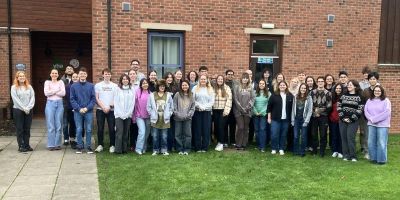Saved botanic greenhouse finds new home

A donated botanic greenhouse steeped in local history will be moved to university campus to kick start plans for a teaching, research and wellness space.
The seven-metre-long greenhouse, which was donated by Pickard Properties, was part of Moor Grange, a historically significant building located on the Spinning Acres development site in Far Headingley.
The project continues a historic connection between Spinning Acres and the University, which dates back to the late 1800s. The site used to belong to the University before it was acquired by Pickard Properties.
Once carefully dismantled and transferred to campus, it’s hoped the space will host an array of scientifically and economically important plants from around the globe, providing an area of quiet respite amongst the busy student campus, where students can learn and interact with exciting and beautiful species of plant life.
There are also ambitions for the greenhouse to host interdisciplinary research projects, acting as a testbed for sustainable solutions to solve real world challenges, such as food insecurity and climate change, as well as supporting conservation.
We are thrilled to receive this generous donation. This greenhouse could not only facilitate research and teaching, but it’s hoped it will also be the heart of a larger initiative to promote environmental awareness, collaboration and well-being across our campus.
Other ideas for the greenhouse include supporting teaching by enhancing the curriculum and engaging students, academic and operational staff, and volunteer groups with the natural world.
The longer-term ambition is that it’ll become the epicentre of a university botanic garden.
The city’s original botanical garden, Leeds Zoological & Botanical Gardens, also known as Headingley Zoo, opened in the mid-19th century, but was only open for 18 years.
The history of Moor Grange
Moor Grange was one of the larger villas constructed during the development of Far Headingley in the 19th century and became notable for its association with prominent figures in Leeds.
In 1895, the villa briefly served as the home of Arthur Mayo-Robson, a Professor of Surgery at the Yorkshire College, the forerunner to University of Leeds. Following Mayo-Robson's death in 1899, Moor Grange was acquired by the Middleton family, who were related to the forebears of Kate Middleton, HRH Princess of Wales.
In 1950, Moor Grange were purchased by University of Leeds and incorporated into Tetley Hall. While other areas of the site were transformed into student accommodation, Moor Grange remained untouched as a result of a conservation order placed by Leeds City Council.
As a result, Moor Grange was preserved and integrated into the university's student community, contributing to the historic character of the area.
Denise Mcardle, Strategic Director at Pickard Properties, added “we are delighted to donate the greenhouse to University of Leeds and provide it with a new chapter in its long history.”
The School of Biology welcome people across campus to shape the future of the university teaching and wellness garden. If you’re based at the University of Leeds and would like to get involved in this potential new project, please email Seb Stroud.




